Nomadbrow (1)
By:
April 26, 2012
Erik Davis, author of Techgnosis, Nomad Codes, [Led Zeppelin IV], and Visionary State, is a friend of HiLobrow. He is also a contributor: His 2010 “Pop Arcana” column for us on the Cute Cthulhu meme remains one of our most popular posts. We’re thrilled to publish ten of Davis’s essays which first appeared elsewhere; this is the first installment in the Nomadbrow series.
The following is included in Krautrock, ed. Nikos Kotsopoulos (Black Dog).
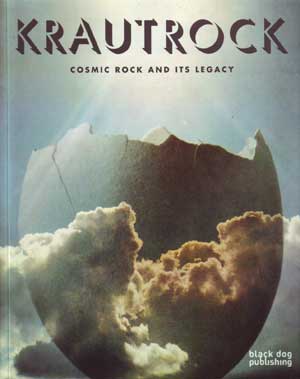
Imagine you are standing alone on a craggy windswept sea cliff beneath a moonless night sky. You spread your arms out at your side like superhero wings and you slowly begin to ascend, a dreamlike absorption into the dark embrace of the galaxy. Your pace quickens until you are rocketing through the stars like a spectral eyeball shot out of a quantum canon. The immensity of space swallows you up, and as the perceptual frameworks you normally use to process reality evaporate, you become profoundly and ecstatically disoriented. Boundaries melt, nowhere is up or down, and your immense speed has morphed into a glacial drift. Your tiny mind is blown as you attempt to compass the conundrum of infinity, while the flickering flash of awareness you call your self expands to embrace this vast void of shifting three-dimensional geometries, this empty and shattered immensity, this cosmos.
Now here’s the question: what soundtrack was playing during your trip?
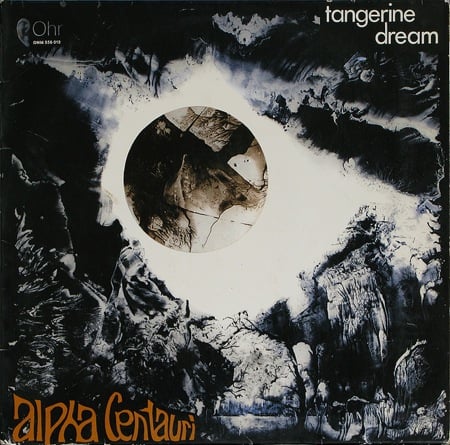
If you heard hard-ass hippie freak-out rock replete with bongos, scattershot guitar solos, and feedbacking flutes, or if you heard spectral and atonal Moogified soundscapes too rock’n’roll to count as avant-garde music and too experimental to count as rock’n’roll — in other words, if you heard Krautrock — then you are not quite as alone in the cosmic void as you might at first suppose. You are, at the very least, standing there with Edgar Froese, who first used the term Kosmiche Musik to characterize the sounds Tangerine Dream started to make with their deep space electronics-heavy second album, 1971’s Alpha Centauri. Though Kosmische Musik is sometimes conflated with the general category of Krautrock, my ears tell me that some crucial Krautrock bands — Can and Neu — are not nearly as kosmiche as acts like Tangerine Dream, Klaus Schulz, Popul Vuh, and a lot of the records released on Rolph Ulrich-Kaiser’s Kosmiche Musik label. Kosmiche Musik, in my mind, seems to be a crucial strand of the progressive psychedelic music that appeared in Germany in the early 1970s: an alternately meditative and ferocious dissolution of boundaries that invoked, through sound and function and packaging, the unearthly otherworlds that link outer and inner space.
But this only begs the question: what does it mean to speak of the cosmic in music?
To edge toward an answer, we must first strip the word of its purely naturalist connotations. The cosmic is never just the brute fact of the material universe, but the cluster of feelings, imaginings, and spiritual intuitions that arise when we try to wrap our minds and hearts around that immense fact — or to make art from such inevitably fragile wrappings. The cosmic, in other words, is not just an object but a quality of consciousness.

What sort of quality? For the ancient Greeks, kosmos meant an “orderly arrangement;” in Homer, kosmeo describes the practice of marshalling troops. The ancient geometry shaman Pythagoras, who believed that number and mathematical form lay at the heart of reality, was probably the first thinker to use kosmos to characterize the material universe, which, as you might expect, was imagined to be an ordered and harmonious whole. Pythagoras’ famous concept of the “music of the spheres,” which is hardly unrelated in spirit to kosmiche musik, derived from his belief that the mathematical ratios that underlie harmonic musical overtones are also incarnated in the structure of the heavens — particularly the ratios of planetary orbits, which were imagined as onion-skin like spheres nested within one another. By the time of Plato, kosmos had come to denote the entire visible universe, a balanced and ordered whole that was crafted by a wise demiurge who made his creation beautiful as well as true. This element of beauty is key to the classic philosophical account. In the Timaeus, Plato describes the cosmos not only as the holistic incarnation of rational and geometric principles, but also as a kind of living creature, “the fairest and most perfect of intelligible beings.”
When we gaze up at the night sky, or when we analyze the sacred geometry seemingly carved into the planetary orbits or astrological natal charts, we can still sniff the atmosphere of beauty and perfection that inspired the old Greeks and their craftsman cosmos. The contemporary fact that the universe displays self-similar structures on the greatest of scales — patterns born just microseconds after the Big Bang that still striate the whole enchilada — is enough to give anyone a Platonic flashback even today. But another quality has entered the modern experience of the cosmos as well: a stern and sometimes self-immolating feeling of immensity and awe mixed with disorientation, loneliness, even fear. The cosmos, it seems, is no more beautiful than it is hospitable. Cataclysmic explosions abound; meteorites have pulverized planet earth (and will do so again); and the inconceivable number of galaxies itself undermines whatever comfort we might take in cosmic existence with the sheer absurdity of the situation. Outside of faith communities, few of us can even imagine the old idea of a master creator: Pythagoras’ composer or Plato’s craftsman or the good Lord who rules it all. The awe that confronts us in the desert night-sky, the awe that lays at the hot heart of the kosmiche, is, in a sense, the after-image of this now absent demiurge.

The shift to the modern cosmos replaced the orders of the sacred with the more dizzying rigors of the sublime — a concept and aesthetic experience that remains one the major cultural sources of the kosmiche vibe. Though most associated with the blasted heaths and crashing waves of Romanticism, the notion of the sublime arose roughly a century earlier, at the onset of the Age of Enlightenment, when well-heeled British tourists on the road to Italy got freaked out by the Alps. Making their way through the mountains, gentlemen like Joseph Addison and the third Earl of Shaftesbury glimpsed a craggy and ruinous landscape whose jagged expanse powerfully moved their souls in a pleasurable if disturbing manner that had little to do with the well-proportioned sense of beauty that the ancients associated with the craftsman’s cosmos. Addison’s account of his 1699 tour is peppered with terms like “unbounded” and “unlimited” — terms of excess and boundary dissolution rather than proportion and harmony. This dissolution of borders, coupled with a sense of immensity and expressive chaos, became hallmarks of the sublime.
Inevitably the philosophers sunk their teeth into this spooky cognitive thrill, a specifically modern sensation that was also a new way of seeing the world, and especially the world of nature. In the middle of the eighteenth century, Edmund Burke boldly contrasted the sublime with the beautiful, characterizing the aesthetic pleasure of the former as a sense of astonishment mixed with fear, a heady brew that could be evoked by objects marked by “vastness, infinity, magnificence.” A few decades later, Immanuel Kant took up the baton in his Critique of Judgment. Laying the groundwork for the mise-en-scène of a thousand horror films and gothic novels to come, Kant wrote that nature stirs up the idea of the sublime “in its chaos, or in its wildest and most irregular disorder and desolation, provided it gives signs of magnitude and power.” Kant contrasted the bounded limits of the beautiful object with the boundlessness of the sublime environment. But the philosopher suggested something even more trippy: that the feeling of sublimity does not really lie in the object at all, however dizzying and immense. Instead, that rush of unnerving awe lies precisely in the failure of the human imagination to fully grasp the thing it confronts. In other words, the sublimeultimately lies within, a reverberating void we confront just beyond that cliff edge where we reach the limits of our own vision, even — though Kant himself would not say this — the limits of our own reason.
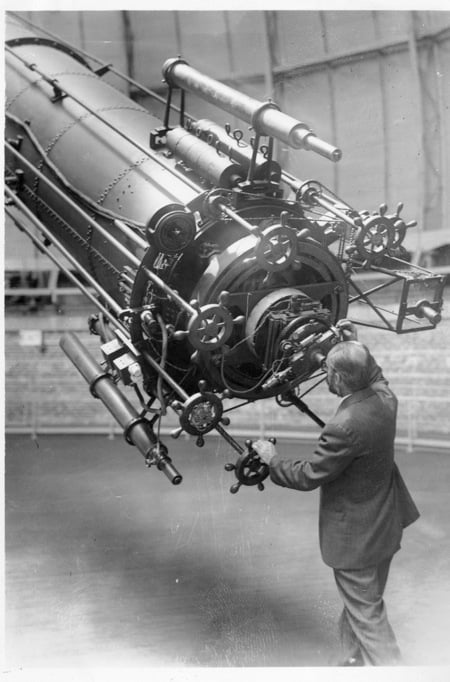
So stand with me and Froese at the edge of this cliff, and you will see how the rhetoric of the sublime infected the night-sky experience of the kosmiche. From the moment that Galileo peered through his amplified glass and bespied the rings of Saturn, telescopes and their spectrum-scanning descendents have produced a picture of the universe that is constantly expanding in both its details and its magnitude (not to mention its startling paradoxes). You can get a glimmer of the giddiness this perpetual perceptual expansion can induce by recalling that, only a century ago, the majority of astronomers still believed the universe contained only a single galaxy. The limits of the Milky Way were the limits of the cosmos. Then Edwin Hubble started analyzing images captured with Mount Wilson’s 100-inch telescope in Southern California. Realizing that the variable stars nestled in some distant spiral nebulae lay far beyond boundaries of the Milky Way, he concluded that these nebulae were galaxies like our own, a few of what we now know are hundreds of billions of massive star clumps. Moreover, by comparing the red shift of these distant stellar objects, Hubble also grokked that the universe was constantly expanding — a giddy and somewhat nauseating prospect that literally exploded whatever static assumptions remained from the clockwork universe of the ancients.
Hubble’s expansion of the physical universe through both space and time is a perfect expression of the sublime object that dissolves boundaries and overwhelms our imagination (what Kant would call the mathematical sublime). Indeed, it is in the cosmos that the sublime finds its final, perhaps terminal home. The raging storms and craggy moors of the Romantic era, when the sublime transformed into a fundamental aesthetic category, have now been leached of their intensity through over-exposure and cliché. We’ve all seen that movie. Driving along the highways of the Alps today, we think of postcards and Disneyland rides. But when we pour over tarted-up photos of nebulae from the Hubble telescope, or attempt to wrap our minds around the current astronomical picture, with all its paradoxes,contradictions, and immensities, we can still taste an unironic and sometimes startling sense of the sublime — “an emotion,” wrote Kant, “that seems to be no sport, but dead earnest in the affairs of the imagination.”
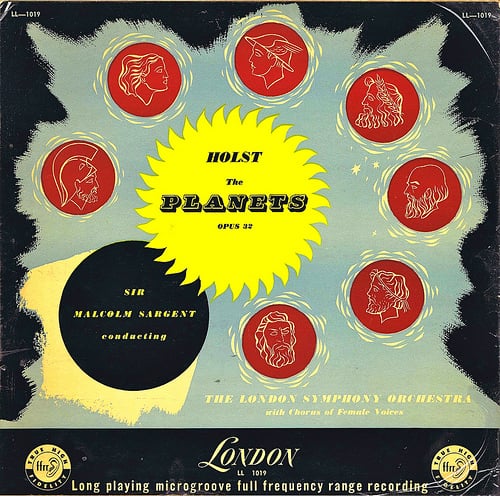
Though rooted in the confrontation with nature’s extremes, the sublime is an essentially aesthetic quality, and so inevitably became woven into Western art, and especially into the abstract and somewhat boundless art of music. From Beethoven to Bruckner to Strauss, Romantic symphonic music grappled with vast imponderables. After a century of atonality, noise, and chthonic electric guitars, most of this music seems pretty tame to our ears, far too measured and melodically restrained to conjure the alien and “dead earnest” quality of the cosmic — that quality that H.P. Lovecraft would have called outsideness. Holst’s famous suite The Planets, written during World War I, is the last gasp of a charming clockwork solar system that would soon be pulverized by quantum mechanics and, on the musical front, serialism. These twin shocks made many early twentieth-century composers wary of cosmic spirituality and its overheated rhetoric of the sublime.
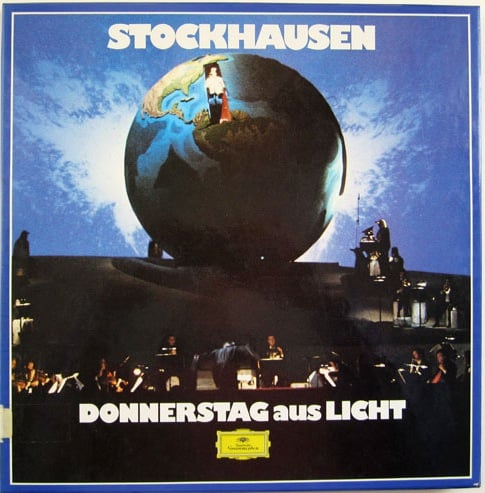
But one can never fully repress the cosmos — that picture of the universe that we can never do without, and that, whatever its degree of naturalism, continues to incarnate mystery. In the postwar world, the cosmic slipped back into music. Oliver Messiaen’s immense imaginative investment in a creative but God-centered universe gave a lot of his brash and colorful large-scale symphonic work an undeniable galactic dimension. By the late 1950s, Messiaen’s student Stockhausen was paring his serial and electronic experiments with a cosmic sensibility that was both mystical and mathematical. Stockhausen, a longhair who would later meditate before his performances like a good Krautrocker, described the shift in postwar music as “an orientation away from mankind… Once again one looked up to the stars and began an intensive measuring and counting.”
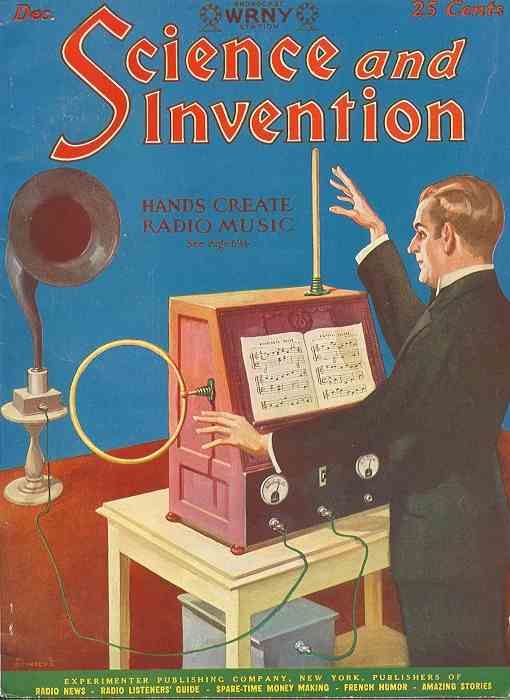
It is a more than a kosmiche coincidence that Stockhausen’s musical mysticism manifested itself partly through electronics. As listeners of Klause Schulz, Tangerine Dream, and Popul Vuh recognize, the timbre and tonality of electronic instruments are fundamental to the kosmiche vibe. Why? In the nineteenth century, the technological capture of electricity and electro-magnetic effects went hand-in-hand with the conceptual revolution introduced by the discovery of the electromagnetic spectrum, a literally universal field of invisible vibrating reality that, in the occulture of the time, created a scientific schema upon which to map higher spiritual or “energetic” dimensions. The fundamentally cosmic character of electronic sound notably asserts itself in the peculiar fate of theremin, one of the first electronic instruments, and certainly — with its spectral tone and incorporeal interface — one of the spookiest. Though Clara Rockmore used the instrument to perform the classics at Carnegie Hall back in the day, the device had performed a classic high-brow/low-brow flip-flop by the 1950s, when film composers started milking the thing for eerie and often extraterrestrial exotica in the soundtracks for flicks like Spellbound, The Day the Earth Stood Still, and The Thing. Cosmic sounds can be sublime, even alienating, but they are also pop.
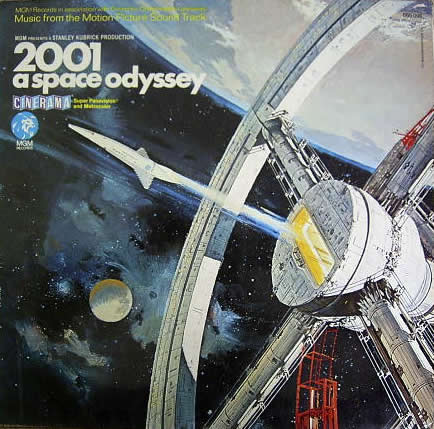
Perhaps the most resonant instance of such a galactic cross-over between cosmic experimentalism and the popcorn crowd occurred when Stanley Kubrick appropriated a couple pieces by the Hungarian composer György Ligeti for his 1968 film2001: A Space Odyssey. In his mountainous chromatic choral works Lux Aeterna and Requiem, Ligeti layered fluctuating lines and hair-splitting intervals according to invisible rules of “micropolyphony.” (As with much of Stockhausen’s work, Ligeti’s music was much less “chaotic” than it sounded on its surface.) With its constantly drifting harmonic vectors, the music sounded as if it were trying to orient itself in deep space by drifting in all directions at once. Using the works without permission, Kubrick unforgettably pared the Requiem’s eerie “Kyrie” with the appearance of the extraterrestrial monolith that heralds and may actually trigger breakthroughs in human consciousness — breakthroughs that, in the experimental trip sequence that closes the film anyway, take place through an arduous visionary passage through the sublime.
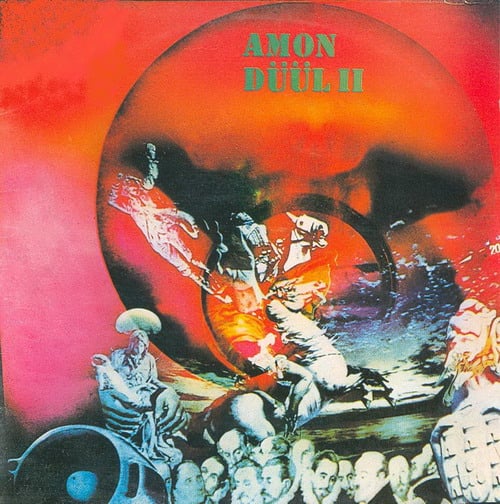
The strange fate of Ligeti’s choral works — a fate that fuses religion, science fiction, avant-garde music, and pop psychedelia — sets the stage for the proper emergence of German kosmiche musik. If we rightly refuse to use the term kosmiche to tag the whole progressive psychedelic German music scene, we can reserve it for a musical sensibility that fluctuates between two significantly distinct and largely improvisatory poles of interstellar overdrive. On the one hand, you find yourself sucked towards the black holes that lies at the heart of the heaviest jams laid down by Amon Düül II and Ash Ra Tempel: a ferociously intense psychedelic spooge-fest whose disavowal of the usual Anglo-American blues substratum signals a formal transcendence of the planet and its “earthy” music. At the other pole, the kosmiche freespace loses all structural relationship to rock’n’roll, even to rhythm and tonality, and becomes the literally groundbreaking “space music” of early Tangerine Dream and Irrlicht-era Klaus Schulze.
What unites the poles of this sacred polarity of interstellar freakery is the quality of boundlessness. The heavy psychedelic jams grow stronger the more they can incarnate the sublime freak philosophy of “anything goes,” while the proto-ambient soundscapes of Tangerine Dream and others erodes traditional melodic, harmonic, and rhythmic markers. These two musical strategies — often combined, as in the better Cosmic Jokers recordings — also reflect what Arthur Schopenhauer characterized, in The World as Will and Representation, as the “twofold nature” of sublime consciousness. When confronted with convulsive and immense eruptions of nature, Schopenhauer argued, we feel in touch with forces that can annihilate us; we are “helpless against powerful nature, dependent, abandoned to chance, a vanishing nothing in the face of stupendous forces.” On the other hand, Schopenhauer describes the profound peace that arises on a deeper level beneath such struggle, as the subject — or listener — “feels himself as the eternal, serene subject of knowing, who as the condition of every object is the supporter of this whole world.”
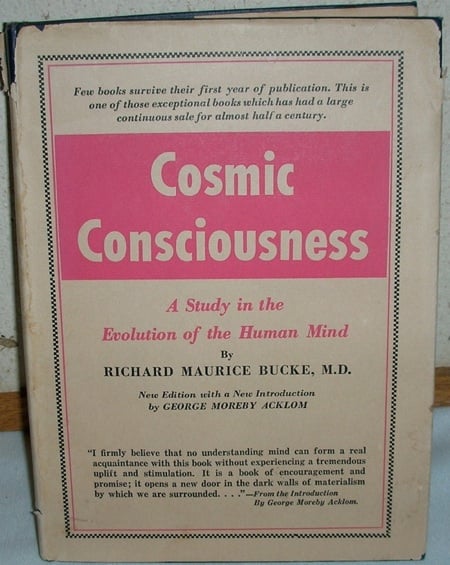
In the sublime dialectic of the kosmiche, titanic and inhuman struggles are mysteriously paired with a serene acceptance of an underlying unity. This deeply psychedelic logic produces the peculiar fusion of drive and drift that characterizes the more mystical dimensions of Krautrock. In the early ’70s, after all, few longhaired German musicians were serving as astronauts or astronomers. The sublime cosmos they mapped with their music was one they discovered inside their own minds — those domains that the Canadian psychiatrist Richard Bucke was probably the first to call, in his influential 1901 book, “cosmic consciousness.” Remember: the kosmiche is not just an object but a quality of the mind — of your mind. Popul Vuh’s “Vuh,” from In Den Garten Pharoas, is utterly cosmic, and yet the music seems to radiate from within an ancient crypt rather than a black hole at the heart of a distant galaxy. The sublime is a mode of spirit; in the end, it needs no science-fiction prop to justify its wacked-out plunge into the resplendent void. Just don’t look before you leap.
READ Erik Davis’s “Pop Arcana” series for HiLobrow.
CURATED SERIES at HILOBROW: UNBORED CANON by Josh Glenn | CARPE PHALLUM by Patrick Cates | MS. K by Heather Kasunick | HERE BE MONSTERS by Mister Reusch | DOWNTOWNE by Bradley Peterson | #FX by Michael Lewy | PINNED PANELS by Zack Smith | TANK UP by Tony Leone | OUTBOUND TO MONTEVIDEO by Mimi Lipson | TAKING LIBERTIES by Douglas Wolk | STERANKOISMS by Douglas Wolk | MARVEL vs. MUSEUM by Douglas Wolk | NEVER BEGIN TO SING by Damon Krukowski | WTC WTF by Douglas Wolk | COOLING OFF THE COMMOTION by Chenjerai Kumanyika | THAT’S GREAT MARVEL by Douglas Wolk | LAWS OF THE UNIVERSE by Chris Spurgeon | IMAGINARY FRIENDS by Alexandra Molotkow | UNFLOWN by Jacob Covey | ADEQUATED by Franklin Bruno | QUALITY JOE by Joe Alterio | CHICKEN LIT by Lisa Jane Persky | PINAKOTHEK by Luc Sante | ALL MY STARS by Joanne McNeil | BIGFOOT ISLAND by Michael Lewy | NOT OF THIS EARTH by Michael Lewy | ANIMAL MAGNETISM by Colin Dickey | KEEPERS by Steph Burt | AMERICA OBSCURA by Andrew Hultkrans | HEATHCLIFF, FOR WHY? by Brandi Brown | DAILY DRUMPF by Rick Pinchera | BEDROOM AIRPORT by “Parson Edwards” | INTO THE VOID by Charlie Jane Anders | WE REABSORB & ENLIVEN by Matthew Battles | BRAINIAC by Joshua Glenn | COMICALLY VINTAGE by Comically Vintage | BLDGBLOG by Geoff Manaugh | WINDS OF MAGIC by James Parker | MUSEUM OF FEMORIBILIA by Lynn Peril | ROBOTS + MONSTERS by Joe Alterio | MONSTOBER by Rick Pinchera | POP WITH A SHOTGUN by Devin McKinney | FEEDBACK by Joshua Glenn | 4CP FTW by John Hilgart | ANNOTATED GIF by Kerry Callen | FANCHILD by Adam McGovern | BOOKFUTURISM by James Bridle | NOMADBROW by Erik Davis | SCREEN TIME by Jacob Mikanowski | FALSE MACHINE by Patrick Stuart | 12 DAYS OF SIGNIFICANCE | 12 MORE DAYS OF SIGNIFICANCE | 12 DAYS OF SIGNIFICANCE (AGAIN) | ANOTHER 12 DAYS OF SIGNIFICANCE | UNBORED MANIFESTO by Joshua Glenn and Elizabeth Foy Larsen | H IS FOR HOBO by Joshua Glenn | 4CP FRIDAY by guest curators
